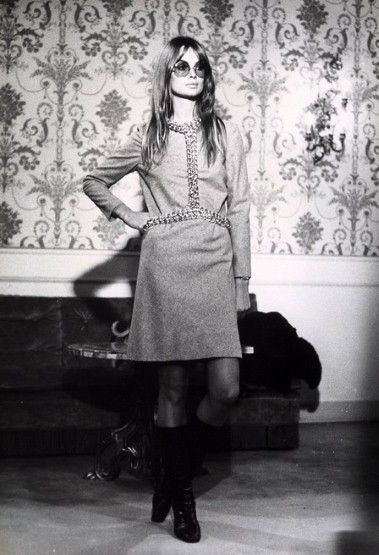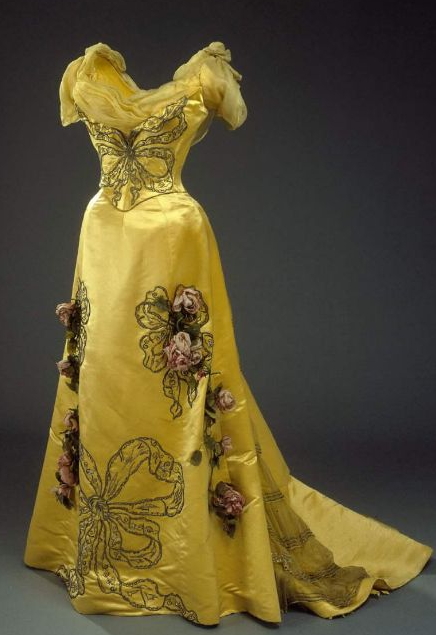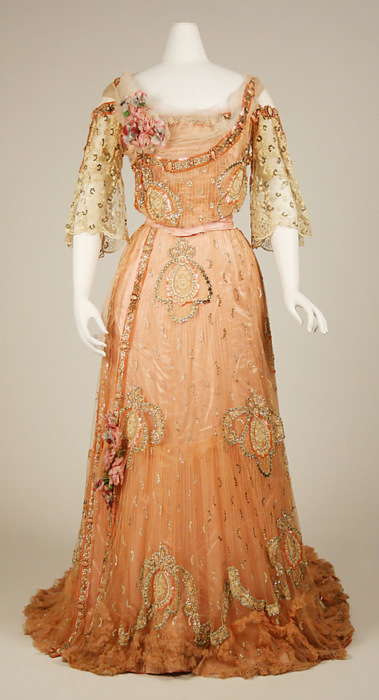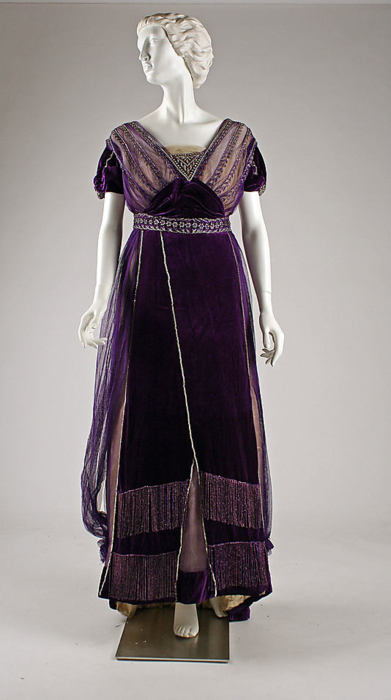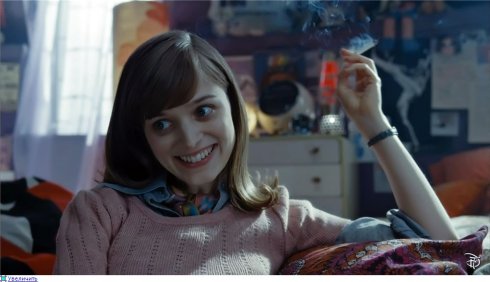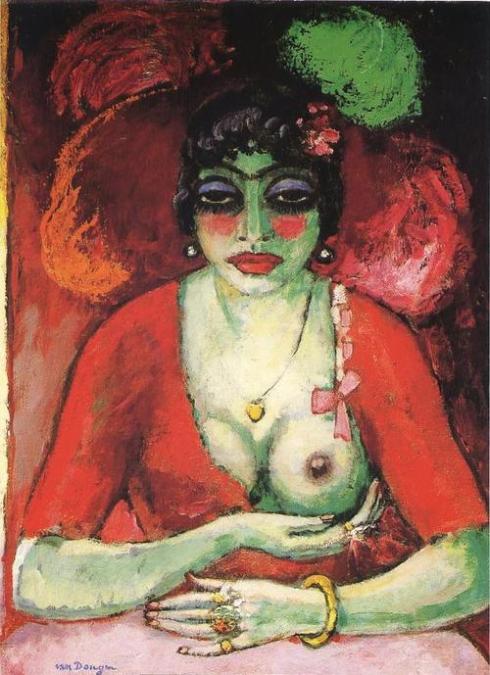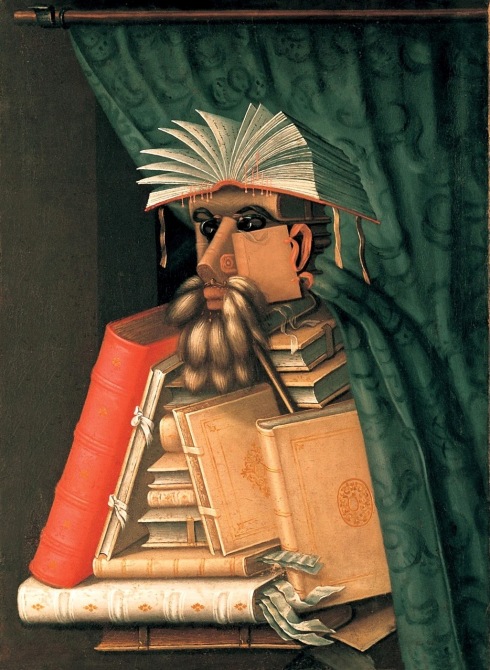“I fall in love with Britain every day, with bridges, buses, blue skies… but it’s a brutal world, man.”– Pete Doherty

Pete Doherty – an introverted, artistic, daring, kind and romantic Englishman is perhaps the most real person there is out there in the music business and that is one of the reasons the media portrays him as a substance user, bohemian lover and fake poet, at the same time neglecting and purposely ignoring the real Pete Doherty; a musician, a poet and an artist.
Pete Doherty is a product of a comfortable middle class family and though he showed an early interest in music when he started playing guitar in order to impress a school friend Emily whom he fancied, his primary interest was literature; at the age of sixteen he won a poetry competition. After achieving eleven GCSEs, 7 of which were A* grades, he was offered to study English Literature at Oxford; an offer he gladly turned down in favour of moving to his grandmother’s flat in London and working at a Willesden Cemetery where he filled graves. However, most of the time he spent reading and writing poetry while sitting on the gravestones; that really sounds atmospheric. He eventually did go to college Queen Mary to study English literature but he left the course after the first year. After leaving the university, he moved into a London flat with his friend, and a future band member, Carl Barat.
The Libertines is a band formed from a close friendship between Pete and Carl, a friendship Carl has described as having the obsessiveness and jealousy and all the things that come with first love. The Libertines had that kind of raw energy, spontaneity and liveliness so much needed on the British music scene in the first years of the 21st century. However, after the second album The Libertines the group split due to Pete’s increasing drug problems and all the unfortunate events caused by it. No one really sat face to face with Pete and told him that he was kicked out of the band, he had heard it on the radio, read it in the newspaper, and this left him feeling hurt and betrayed. What saddened him the most was the fact that Carl was his best mate and this left him contemplating what was the line people were prepared to go to in order to gain success or wealth. ‘I’d rather starve my guts than stab a friend in the back.’ he said. His response to this was a new band called Babyshambles.

It was in Babyshambles that Pete’s true artistic and poetic character came out of its shell and created an album Down in Albion filled with beautiful, dreamy songs. He did write songs in The Libertines but writing them with Carl has surely been different than writing them on his own. Various literal influences have come to the fore on many of the song featured on the album, most notably A Rebours (title taken from the same named nineteenth century novel by Joris-Karl Huysman). I can’t resist adding that A Rebours was the first song out of all Babyshambles’ that I fell in love with and is my favourite now still. I just can’t forget that line ‘…you ignore, adore, A rebour me..’
Sitting on the marble gravestones and reading books in the long Autumn afternoons, gazing at all those red and yellow falling leaves while the breezing wind brought anxiety and melancholy has surely been useful for Pete who listed his favourite novels as George Orwell’s 1984, Graham Green’s Brighton Rock and Our Lady of the Flowers by Jean Genet along with complete works by Oscar Wilde. From poetry he mentioned Flowers of Evil by Baudelaire and works of Emily Dickinson. He also put particular emphasis on Romantic poets and also on existential philosophers. Judging by his song, the book A Rebours would also be on his list. The deepness of both his lyrics and his characters are often undervalued due to the extreme infatuation the media has with him as a drug addict and a rebel. Pete is a rebel; rebel against conventions, normality, simple-mindedness and elitist aspect of art. He said ‘I don’t really know what “intellectual” means, but if it means you’ve got a desire to learn, you’ve got a desire to look for things that haven’t been presented to you, then, maybe. I think that “intellectual” is quite an exclusive word. I think it’s just for anyone that has a thirst or a hunger to improve themselves, or a yearning to escape from somewhere to get to a better place.’
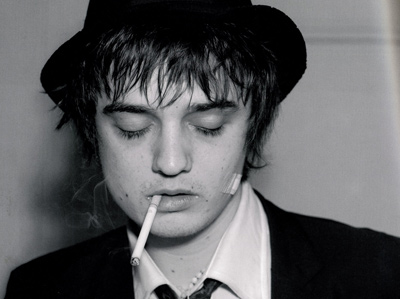
On the first sight Pete probably does seem as shallow and fake as the media portrays him, but the real Pete; Pete the intelligent and humble poet, the artist, the libertine is a person worth being inspired by, worth listening too and worth giving respect to. A libertine is ‘one devoid of most moral restraints’ or ‘one who defies established religious precepts’; a freethinker and that’s exactly what Pete is; despite the odds he managed to stay oblivious to the public and media’s opinions and harsh judgements – “I’m not going to be hardened by these people, to these things, I’m not going to let them destroy my feelings or my emotions.” Seems like the public ignores, adores, a rebours him, leaves him washed up begging for more...
It’s important to stay ignorant to public opinions and just stay in your own world which is as beautiful, as romantic, as peaceful and interesting as you have created it. That’s what Pete does; he lives in his own world, leaving the harsh greyness of reality outside the door. He still has that rush, that desire, that absolute contamination of soul with melody and music. (‘I think I only needed something to hold on to. It has never been about depravity. It’s always been about melody. But melody and I met in many depraved situations. Meeting melody is the victory of the empty spiralling nightmare.’) He keeps living his life no matter how fucked up it is, not knowing what’s going to happen next, crossing the borders of reality into the unknown. In some terms Pete’s lifestyle could be compared to some nineteenth century bohemian poets. Every generation has its leader, it is the one who represents all the despair, coldness, alienation and sadness numerous young people feel. Pete sort of has that aura of bohemianism and romanticism about him; his intelligence, open-mindedness, his sensitivity and strangeness connected to him certainly help too in drawing people towards him. Pete is the icon of the 21st century romanticism, like a today’s Lord Byron; he escapes reality into his own world of imagination and praises individuality and honour.

Album Down in Albion is Pete Doherty’s world of imagination. Decision is yours whether you want to enter it or not. It’s a beautiful, melodic album, gentle and dreamy (compared to loud, noisy songs of The Libertines, but let’s not forget that Carl plays his guitar in punk style) and the songs sound so contemporary in a good way, something I can relate to, something touchable and real. Besides the already mentioned song A Rebours I also like songs Fuck Forever (‘And fuck forever/If you don’t mind/See I’m stuck forever/Oh I’m stuck in your mind, your mind, your mind…’), The 32nd of December and In Love with a Feeling. Song Killamangiro is very fast paced and vibrant. Song La Belle et la Bete also sounds very nice, and it’s a duet between Pete and his then girlfriend Kate Moss. I also have to mention one more song, though it’s not on this album it is written by Pete Doherty for The Libertine’s second album, and it’s the song ‘What Katie Did’; it’s very melodic and soft and lyrics are sweet (‘Oh what you gonna do, Katie?/You’re a sweet sweet girl/But it’s a cruel, cruel world/a cruel, cruel world. (…) …You won’t just leave me standing here/And don’t give in/Not to the darkest sins/Oh what you gonna do?/It’s up to you.’) However, on album Down in Albion there is a song called What Katie Did Next, I’m just saying.
Musically the album is seen as a move from The Libertines’ style of music; now we at least know what Pete and Carl’s musical preferences would be like. However, The Libertines are back together again and, wait for it, they are planning to release, what would be their third album, in 2015. This news came like a cherry on top, at least I hope. I know that I am very, very, very exited to hear that since I feel like I’ve missed out on lot of things in music and sometimes it’s nice to be able to listen and love and album released in your lifetime.
P.S. If you want to have more insight in Pete Doherty’s world of imagination, or you’ve been wondering what’s inside his whimsical mind, you can read his diary, or look at I should better say. It is really interesting. I would describe it as a sneak peak into Pete’s mind.
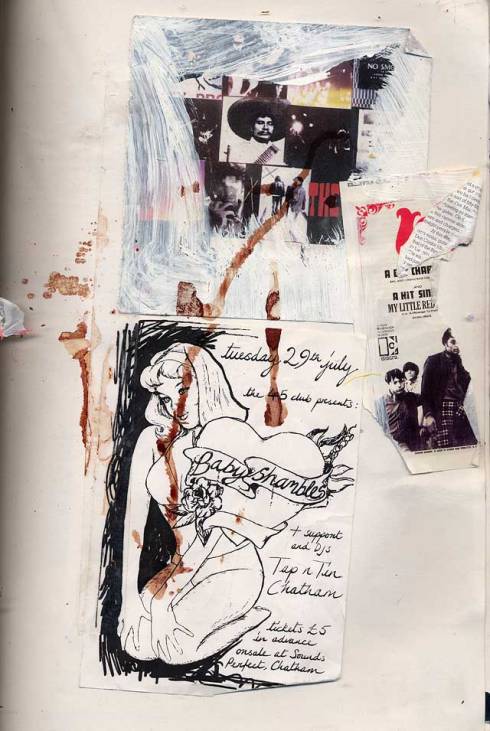
“If you’ve lost your faith in love and music then the end won’t be long.”
Tags: 21st Century Rock Music, A Rebours (song), Alternative rock, Babyshambles, British music scene, Carl Barat., Down in Albion, Indie rock, longreads, Lord Byron, Pete Doherty, The Libertines




















